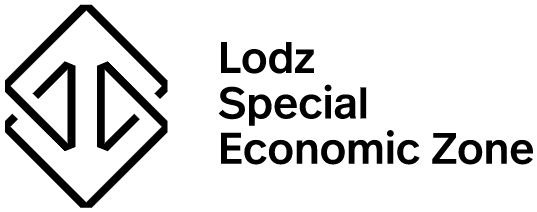Warehouse safety is of the utmost importance. A safe work environment can help prevent injuries and ensure that inventory and assets are not lost or damaged. One way to ensure a safe, secure environment is by having regular safety inspections.
These inspections will help you make sure that your warehouse is operating safely and securely. They also serve as a reminder for anyone who manages the space, including managers, supervisors, and operators, to stay on top of regular inspections and reporting.
What is a warehouse safety inspection?
A warehouse safety inspection takes into account the overall condition and cleanliness of your warehouse or logistics centre. It also examines the equipment and conditions of the space to ensure everything is working as it should be. This includes the space itself, as well as the electrical and gas systems, cleanliness, machinery, inventory, hazards, racking and much more.
Warehouse safety inspections can also check for employee health and safety more generally, including whether your workstations, tools and equipment are in good condition. Ensuring your machinery and equipment are in tip-top condition means they’ll last longer, your employees will be safer and maintenance can be predicted in advance of any faults.
It’s also important to keep in mind that safety inspections aren’t just for large warehouses or distribution centres. When you have employees in a variety of commercial spaces, even for a small-scale eCommerce distribution business, it can be helpful to do safety inspections to make sure those spaces are operating safely and securely, as they should be at all times.
Why is a warehouse safety inspection important?
Just as a daily walkthrough can help you think about how to best improve your work environment, a safety inspection offers another opportunity to reflect on your current practices. It can help you identify areas where you can improve your safety program and it can also help identify what’s currently in good shape, so you know what to focus on next.
Taking steps to ensure employees or building occupants are safe will significantly increase productivity, too. A safe environment makes for a happy and well-run business, meaning your supply chain and operations become more resilient as a result.
Then there’s the hot topic of compliance. It is equally important to ensure you have taken the steps to follow the necessary standards and guidelines. Some would argue even more so, given that lawsuits and fines can be damaging for any business. These standards and guidelines will differ depending on your territory, so be sure to check. However, by following these standards, you can reduce risk, save costs and maintain complete control of the environment.
Another thing that warehouse safety inspections can reveal is operational inefficiencies. By looking more closely at the setup of your warehouse or logistics operation, it is possible to establish an effective supply chain built around efficient workflows and best practices. This angle is often overlooked. On the face of it, it might seem that a simple cleanliness checklist means little in the grand scheme of things, but a dirty warehouse can present all kinds of difficulties if left unchecked.
Although warehouse inspections can be challenging, they are absolutely vital. Using pen and paper checklists is time-consuming, so nowadays it is recommended that you use an end-to-end inspection and reporting software so you can digitise your inspections and reports. This way, all of your warehouse safety checklists can be be consistently repeated time and again, closing the loop on fragmented inspections and operational inefficiencies.
5 warehouse inspections you need to conduct
1. Warehouse cleanliness inspection
Cleaning inspections are vital to ensure a safe environment for staff. Early in the pandemic, most warehouses and logistics operators were forced to ensure that the highest cleanliness standards were upheld. Even though the pandemic is in the rear-view mirror, it is still important to continue with these inspections. Daily and hourly cleaning checklists are essential for employee health and wellbeing. Make sure to check the following:
- Clean and sanitised kitchen facilties
- Equipment sanitisation
- Hazardous materials storage and training
- PPE equipment regularly replaced
- Clean workstations after shifts
- Restocked cleaning supplies
- Properly inspected toilet facilities
2. Warehouse receiving process inspection
Warehouse receiving process need regular inspections to ensure that you reduce inventory shrinkage or wastage. Though most of this can be done through staff training and fostering a proactive mindset, checking deliveries and the movement of goods between locations with regular inspections can help, too. Don’t forget to look at quantities, product codes, consignment numbers and the integrity of the received goods. This is normally a time-consuming process. Periodic, random inspections can help when time is short, but nowadays with technology, there’s no reason why these can’t be done at regular intervals.
3. Racking inspection
Racking inspections are a critical part of the smooth running of a warehouse or logistics centre. Racking that is in use needs to meet the toughest demands of your operation, so when it suffers from wear and tear over a prolonged period, it’s important to regularly check the structural integrity of the racking. This can be done with a digital racking inspection checklist, saving time and enabling the inspection team to capture detailed information about the racking.
4. Inventory inspection
Inventory inspections and inventory management, which is also known as an inventory audit, can help stop inventory shrinkage or damage. Whether it’s inconsistencies in stock, poor organisation, theft or damage, regularly checking your goods with inventory checklists or inspections can help mitigate or eliminate any loss. Weekly inspections can go along way to detecting shrinkage, and quarterly audits can reveal a lot about the cost implications of poorly managed inventory, which can severely impact your bottom line.
5. Electrical safety inspection
Electrical safety inspections are normally conducted by a trained electrical professional, but that doesn’t mean you can’t periodically observe and report on any potential electrical safety issues. Sometimes, logging issues internally and actioning them for external contractors is a sticking point for larger operations. However, with and end-to-end inspection software, it’s easy to log any hazards and capture evidence, like photos and videos, which can then be sent to the trained electrical safety contractor for further inspection.
6. Workplace environment inspection
Are your employees working in unsafe conditions? Do they suffer from excessive noise, poorly sanitised workspaces, dimly lit environments or hazardous conditions? Workplace environment inspections can reveal all about the immediate working environment that your employees are in, helping you make informed decisions to better their working conditions which ultimately boosts their safety and productivity as a result. Beyond this, the warehouse itself needs regular inspections. This accounts for the structure, windows, floors and doors. Commercial property inspections can easily be conducted with the help of Property Inspect.
Things to consider when conducting a warehouse inspection
- Equipment and tools: Inspect each piece of machinery and each tool to make sure it’s in good condition and working correctly. Examine the machine for any signs of wear and damage.
- Electrical and gas: Ensure that all electrical outlets are in good condition and functioning correctly. Check the plugs to make sure they’re not frayed or broken. Inspect the gas supply to ensure it’s functioning as it should.
- Workstations: Inspect each workstation to make sure it’s clean and functioning correctly. Check to see if any of them are out of use because they’re too dangerous to use.
- Storerooms and offices: Check each storage area to ensure there’s nothing blocking the way. Look under shelving and in bins to see if anything is out of place.
How to digitise warehouse safety checklists
Safe work environments can help prevent injuries, ensure that inventory is not lost or damaged, and help reduce the risk of exposure to hazardous materials. Regular warehouse inspections will help keep your workplace in good shape and compliant.
With time at a premium these days, it’s important to take steps to make your workplace smarter and more efficient, and there is no better way to do this than by using software that helps you manage all your inspections and reporting in one place.
If you use an existing checklist, Property Inspect can digitse it for you. Every time you need to conduct an inspection, you can open the Property Inspect app, navigate to your custom-branded template and conduct a comprehensive inspection in a fraction of the time, helping you avoid unnecessary set backs and supply chain inefficiencies that result from unsafe working conditions.
Property Inspect makes it easy for you to build, customise and update warehouse checklists. You can even schedule and assign inspections to team members and then issue those completed reports to stakeholders or contractors to action. In addition, being able to capture rich multimedia evidence helps you identify deficiencies quicker and more efficiently, giving you ample time to react and plenty of material for auditing and compliance.
Warehouse Safety Inspections are important so find out more how Property Inspect can help:
Warehouse & Logistics Inspection Software









